-
 Bitcoin
Bitcoin $116900
0.00% -
 Ethereum
Ethereum $4280
5.48% -
 XRP
XRP $3.265
-1.45% -
 Tether USDt
Tether USDt $1.000
-0.01% -
 BNB
BNB $807.0
1.41% -
 Solana
Solana $183.1
2.93% -
 USDC
USDC $0.9999
0.00% -
 Dogecoin
Dogecoin $0.2440
6.50% -
 TRON
TRON $0.3357
-0.88% -
 Cardano
Cardano $0.8178
2.63% -
 Hyperliquid
Hyperliquid $44.13
7.45% -
 Chainlink
Chainlink $21.39
9.09% -
 Stellar
Stellar $0.4524
-0.84% -
 Sui
Sui $3.957
2.13% -
 Bitcoin Cash
Bitcoin Cash $572.7
-2.54% -
 Hedera
Hedera $0.2671
1.54% -
 Avalanche
Avalanche $24.77
4.17% -
 Ethena USDe
Ethena USDe $1.001
0.02% -
 Litecoin
Litecoin $122.3
-1.94% -
 Toncoin
Toncoin $3.432
2.26% -
 UNUS SED LEO
UNUS SED LEO $9.007
0.49% -
 Shiba Inu
Shiba Inu $0.00001396
5.26% -
 Uniswap
Uniswap $11.09
1.64% -
 Polkadot
Polkadot $4.155
4.57% -
 Dai
Dai $1.000
0.00% -
 Pepe
Pepe $0.00001253
5.11% -
 Cronos
Cronos $0.1588
2.67% -
 Bitget Token
Bitget Token $4.512
0.05% -
 Monero
Monero $275.0
0.64% -
 Ethena
Ethena $0.7527
15.10%
What are the recommended USDT wallets? How to ensure security?
For secure USDT storage, use hardware wallets like Ledger or Trezor, software wallets like Trust or Exodus, or exchange wallets like Binance or Coinbase, and always enable 2FA.
May 10, 2025 at 01:42 pm
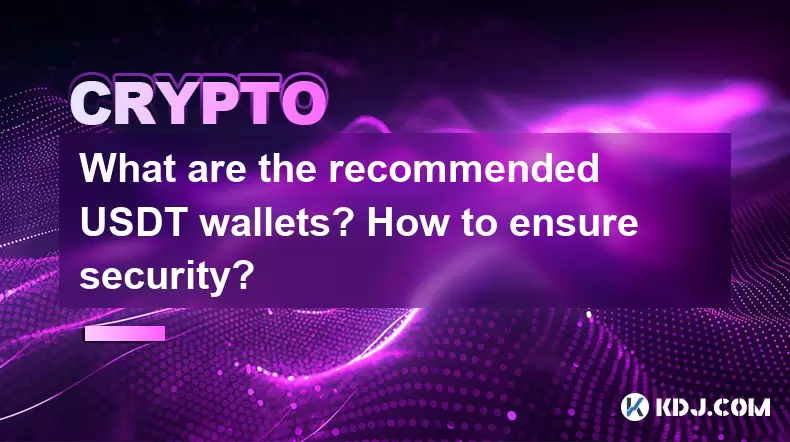
In the world of cryptocurrencies, Tether (USDT) has become a popular choice for many investors due to its stability and peg to the US dollar. When it comes to storing USDT, choosing the right wallet is crucial for ensuring the security of your assets. In this article, we will explore some of the recommended USDT wallets and provide detailed guidance on how to ensure their security.
Hardware Wallets
Hardware wallets are widely regarded as one of the most secure options for storing cryptocurrencies, including USDT. These devices store your private keys offline, making them less vulnerable to hacking attempts.
Ledger Nano S and Ledger Nano X: These are popular hardware wallets that support USDT. To set up a Ledger wallet for USDT, follow these steps:
- Connect your Ledger device to your computer and enter your PIN.
- Open the Ledger Live application and navigate to the "Manager" tab.
- Search for the Tether (USDT) app and install it on your device.
- Once installed, you can send and receive USDT using the Ledger Live interface.
Trezor Model T and Trezor One: Trezor wallets also support USDT and offer robust security features. Here's how to set up a Trezor wallet for USDT:
- Connect your Trezor device to your computer and follow the on-screen instructions to set up your device.
- Open the Trezor Suite application and navigate to the "Portfolio" tab.
- Click on "Add Account" and select Tether (USDT) from the list of supported cryptocurrencies.
- Follow the prompts to create a new USDT account on your Trezor wallet.
Software Wallets
Software wallets are another option for storing USDT, offering a balance between security and convenience. These wallets are typically easier to use but may be more vulnerable to online threats.
Trust Wallet: Trust Wallet is a mobile wallet that supports USDT and is known for its user-friendly interface. To set up Trust Wallet for USDT, follow these steps:
- Download the Trust Wallet app from the App Store or Google Play Store.
- Open the app and create a new wallet by following the on-screen instructions.
- Once your wallet is set up, tap on the "Receive" button and select USDT from the list of supported cryptocurrencies.
- You can now use the provided address to receive USDT.
Exodus Wallet: Exodus is a desktop wallet that supports USDT and offers a range of features, including staking and portfolio tracking. Here's how to set up Exodus for USDT:
- Download the Exodus wallet from the official website and install it on your computer.
- Open the wallet and create a new wallet by following the on-screen instructions.
- Once your wallet is set up, click on the "+" button to add a new asset.
- Search for Tether (USDT) and select it to add it to your wallet.
- You can now send and receive USDT using the Exodus interface.
Exchange Wallets
Exchange wallets are wallets provided by cryptocurrency exchanges, such as Binance and Coinbase. While convenient for trading, these wallets are generally considered less secure than hardware or software wallets.
Binance: Binance is one of the largest cryptocurrency exchanges and offers a wallet for storing USDT. To use the Binance wallet for USDT, follow these steps:
- Create an account on Binance and complete the verification process.
- Navigate to the "Wallet" section and click on "Fiat and Spot."
- Search for USDT and click on "Deposit" to generate a deposit address.
- You can now send USDT to your Binance wallet using the provided address.
Coinbase: Coinbase is another popular exchange that supports USDT. Here's how to set up a Coinbase wallet for USDT:
- Create an account on Coinbase and complete the verification process.
- Navigate to the "Assets" section and search for USDT.
- Click on "Receive" to generate a deposit address for USDT.
- You can now send USDT to your Coinbase wallet using the provided address.
Ensuring Security
Ensuring the security of your USDT wallet is paramount. Here are some key steps to take to protect your assets:
Use Strong Passwords: Always use strong, unique passwords for your wallet and exchange accounts. Consider using a password manager to generate and store complex passwords.
Enable Two-Factor Authentication (2FA): Enable 2FA on all your accounts to add an extra layer of security. Use an authenticator app like Google Authenticator or Authy instead of SMS-based 2FA for better protection.
Keep Software Updated: Regularly update your wallet software and operating system to protect against known vulnerabilities. Hardware wallet manufacturers often release firmware updates to enhance security.
Backup Your Wallet: Create and securely store backups of your wallet's recovery phrase or seed. Store these backups in multiple secure locations, such as a safe deposit box or a fireproof safe.
Beware of Phishing Attacks: Be cautious of phishing attempts, which are designed to steal your private keys or login credentials. Always verify the authenticity of websites and emails before entering sensitive information.
Use Cold Storage: For long-term storage of large amounts of USDT, consider using cold storage solutions like hardware wallets. These devices keep your private keys offline, reducing the risk of hacking.
Monitor Your Accounts: Regularly check your wallet and exchange accounts for any unauthorized transactions. Set up transaction alerts to be notified of any activity on your accounts.
Additional Security Measures
In addition to the basic security measures outlined above, there are several advanced steps you can take to further secure your USDT:
Use Multi-Signature Wallets: Multi-signature wallets require multiple private keys to authorize a transaction, adding an extra layer of security. Services like BitGo offer multi-signature solutions for USDT.
Implement Whitelisting: Some wallets and exchanges allow you to whitelist specific addresses, ensuring that funds can only be sent to pre-approved recipients. This can help prevent unauthorized transfers.
Use a VPN: When accessing your wallet or exchange accounts, use a Virtual Private Network (VPN) to encrypt your internet connection and protect against potential man-in-the-middle attacks.
Secure Your Physical Environment: Ensure that your computer and any devices used to access your wallet are free from malware. Use reputable antivirus software and avoid accessing your wallet on public or unsecured networks.
Frequently Asked Questions
Q: Can I store USDT on multiple wallets?
A: Yes, you can store USDT on multiple wallets. It's a good practice to diversify your storage solutions to mitigate risk. For example, you might keep a small amount of USDT in an exchange wallet for trading and the majority in a hardware wallet for long-term storage.
Q: How often should I move my USDT from an exchange to a secure wallet?
A: It's recommended to move your USDT from an exchange to a secure wallet as soon as possible after purchasing or trading. Exchanges are more vulnerable to hacks, so keeping your assets in a secure wallet reduces the risk of loss.
Q: What should I do if I lose access to my USDT wallet?
A: If you lose access to your USDT wallet, you can use your recovery phrase or seed to restore your wallet on a new device. It's crucial to keep your recovery phrase secure and never share it with anyone. If you've lost your recovery phrase, unfortunately, there's no way to recover your funds.
Q: Are there any fees associated with using USDT wallets?
A: Yes, there may be fees associated with using USDT wallets, depending on the type of wallet and the network you're using. For example, hardware wallets typically don't charge fees for storing USDT, but you may incur network fees when sending or receiving USDT. Always check the fee structure of your chosen wallet and network before making transactions.
Disclaimer:info@kdj.com
The information provided is not trading advice. kdj.com does not assume any responsibility for any investments made based on the information provided in this article. Cryptocurrencies are highly volatile and it is highly recommended that you invest with caution after thorough research!
If you believe that the content used on this website infringes your copyright, please contact us immediately (info@kdj.com) and we will delete it promptly.
- Cold Wallet's Presale: A High ROI Haven in the Crypto Storm
- 2025-08-10 12:50:11
- Meme Coins in 2025: Analyst Accumulation and the Hunt for the Next Moonshot
- 2025-08-10 13:10:11
- Meme Coins in 2025: Early Access to the Moon with $MOBU
- 2025-08-10 12:30:11
- Bitcoin's Golden Cross: Rally Outlook and What's Next
- 2025-08-10 12:30:11
- XRP Price, Remittix, and Ripple Rivals: A Crypto Cocktail
- 2025-08-10 10:50:16
- Live Crypto Updates, August 10: ETH Soars, Trump's Crypto Play, and More!
- 2025-08-10 11:30:16
Related knowledge

How to choose a reliable USDT exchange service provider? How to identify?
Jun 12,2025 at 03:15pm
Understanding the Role of USDT in Cryptocurrency TradingUSDT (Tether) is one of the most widely used stablecoins in the cryptocurrency market. It is d...
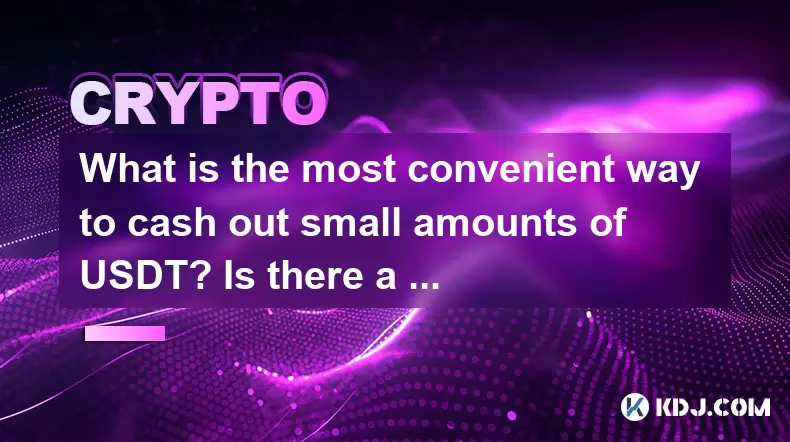
What is the most convenient way to cash out small amounts of USDT? Is there a shortcut?
Jun 11,2025 at 11:00pm
Understanding the Need to Cash Out Small USDT AmountsCashing out small amounts of USDT can be a challenge for many crypto users. Traditional methods o...
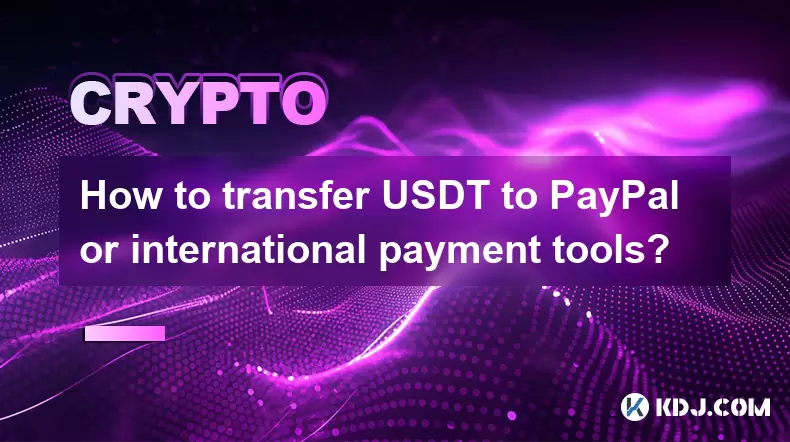
How to transfer USDT to PayPal or international payment tools?
Jun 15,2025 at 05:28am
Understanding the Basics of USDT and PayPal IntegrationUSDT (Tether) is a stablecoin pegged to the US dollar, offering blockchain-based value transfer...
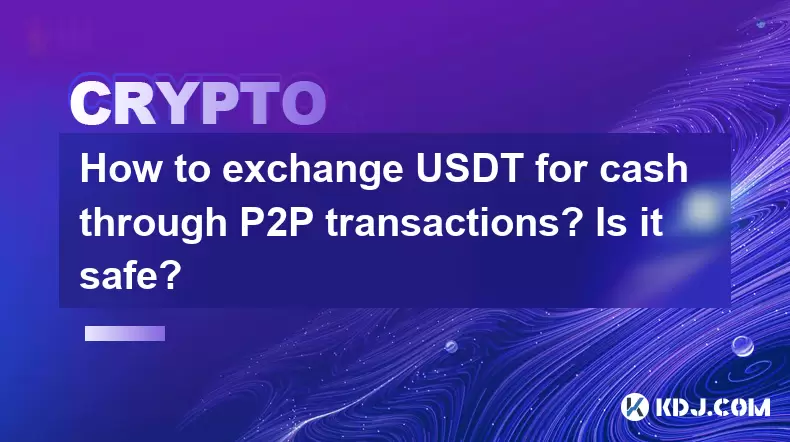
How to exchange USDT for cash through P2P transactions? Is it safe?
Jun 18,2025 at 07:56am
Understanding USDT and P2P TransactionsTether (USDT) is a stablecoin pegged to the value of the US dollar, making it a popular choice for users who wa...
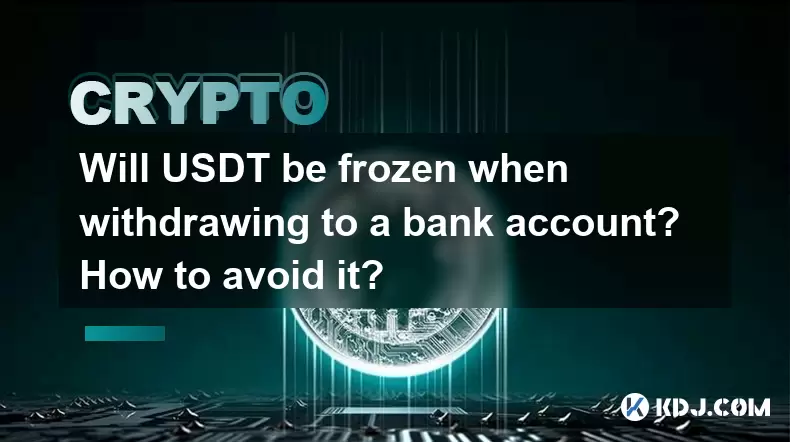
Will USDT be frozen when withdrawing to a bank account? How to avoid it?
Jun 15,2025 at 10:03am
Understanding USDT Withdrawals and Bank Account Freezing RisksWhen users decide to withdraw USDT (Tether) to a bank account, one of the most common co...

How to avoid risks when exchanging USDT for cash? What are the pitfalls?
Jun 11,2025 at 08:14pm
Understanding the Risks of Exchanging USDT for CashWhen exchanging USDT (Tether) for cash, users must be aware of the potential risks involved. As a s...

How to choose a reliable USDT exchange service provider? How to identify?
Jun 12,2025 at 03:15pm
Understanding the Role of USDT in Cryptocurrency TradingUSDT (Tether) is one of the most widely used stablecoins in the cryptocurrency market. It is d...

What is the most convenient way to cash out small amounts of USDT? Is there a shortcut?
Jun 11,2025 at 11:00pm
Understanding the Need to Cash Out Small USDT AmountsCashing out small amounts of USDT can be a challenge for many crypto users. Traditional methods o...

How to transfer USDT to PayPal or international payment tools?
Jun 15,2025 at 05:28am
Understanding the Basics of USDT and PayPal IntegrationUSDT (Tether) is a stablecoin pegged to the US dollar, offering blockchain-based value transfer...

How to exchange USDT for cash through P2P transactions? Is it safe?
Jun 18,2025 at 07:56am
Understanding USDT and P2P TransactionsTether (USDT) is a stablecoin pegged to the value of the US dollar, making it a popular choice for users who wa...

Will USDT be frozen when withdrawing to a bank account? How to avoid it?
Jun 15,2025 at 10:03am
Understanding USDT Withdrawals and Bank Account Freezing RisksWhen users decide to withdraw USDT (Tether) to a bank account, one of the most common co...

How to avoid risks when exchanging USDT for cash? What are the pitfalls?
Jun 11,2025 at 08:14pm
Understanding the Risks of Exchanging USDT for CashWhen exchanging USDT (Tether) for cash, users must be aware of the potential risks involved. As a s...
See all articles

























































































